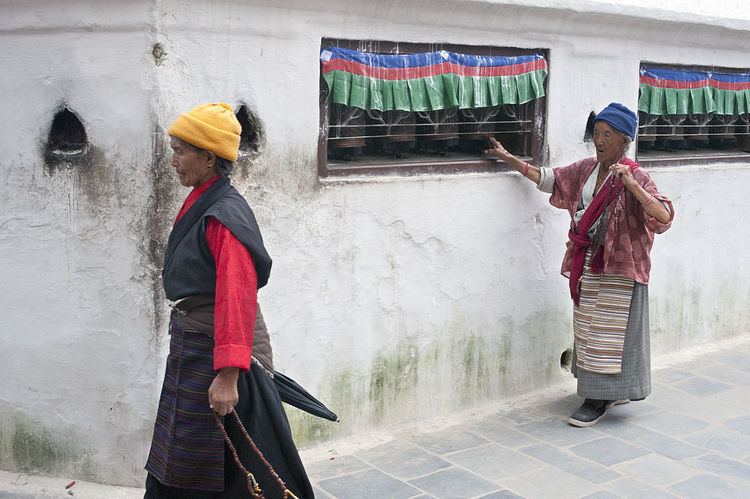 | ||
Kora (Tibetan: སྐོར་ར, Wylie: skor ra, THL: kor ra) is a transliteration of a Tibetan word that means "circumambulation" or "revolution". Kora is both a type of pilgrimage and a type of meditative practice in the Tibetan Buddhist or Bon traditions. A Kora is performed by the practitioner making a circumambulation a in a clockwise fashion round a sacred site or object, typically as a constituent part of a pilgrimage, ceremony, celebration or ritual. However, in broader terms, it is a term that is often used to refer to the entire pilgrimage experience in the Tibetan regions.
Classification and foci
For "pilgrimage", Tibetans generally use the term nékor (Tibetan: གནས་སྐོར, Wylie: gnas skor) "circling around an abode" (Tibetan: གནས, Wylie: gnas, THL: né), referring to the general practice of circumambulation as a way of relating to such places. In the context of kora, the né or néchen (Tibetan: གནས་ཆེན, Wylie: gnas chen) is rendered as "empowered", "sacred" or "holy" place/object, and the né is credited with the ability to transform those that circumambulate it. Aspects of both the natural and the man-made world are also considered to be the né of a wide variety of nonhuman beings such as iṣṭadevatās or ḍākinīs .
Né generally fall into the following four types:
The pilgrim is known as a né korwa "one who circles a né" (Tibetan: གནས་སྐོར་བ, Wylie: gnas skor ba), thus defining them by the ritual circumambulation(s) they perform as part of their journey. Pilgrims seek to attain religious merit by performing koras, which are a major merit generator. The more potent the power place destination the greater the merit accumulated. A kora is performed by walking or repeatedly prostrating oneself. Prostration (e.g., versus walking), circumambulating repeatedly or an auspicious number of times all producing greater merit. Kora may be also be performed while spinning prayer wheels, chanting mantra, or counting rosary beads. Buddhist pilgrims most typically emulate the path of the sun and circumambulate in a clockwise direction. Bön pilgrims traditionally circumambulate counterclockwise.
